Your cart is currently empty!
Tag: Photography
First Look: Switzerland Poppy Prints from The Print Space
Here I take a look at my newly arrived Switzerland Poppy Prints from The Print space.

Ikoflex II – Example Images
I have really enjoyed using my Ikoflex II (851/16), I think mainly for the square image format, but secretly, also for the joy of taking out into public such a beautiful camera.
The square image format means that you need to switch in your mind your field of view. I found this transition reasonably easy to do, although you might disagree once you have seen my pictures! Essentially, you need to fill more frame, and this leads to compositions that were not possible before, and are also a little rarer on the internet due to the lower numbers of square shooters.
Unfortunately, you are restricted to one lens with this camera, a Tessar 75mm 3.5 aperture. Whilst this is a great lens, there are some shots that I know it will struggle with, such as the poppy in my “Yvorne” print below.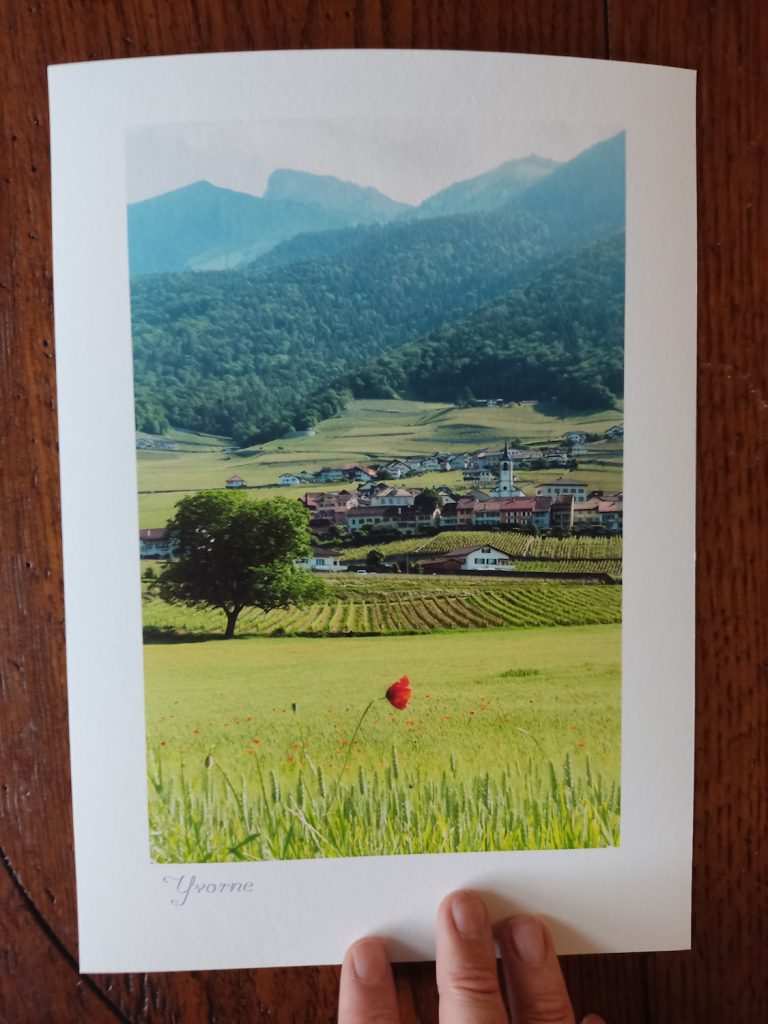
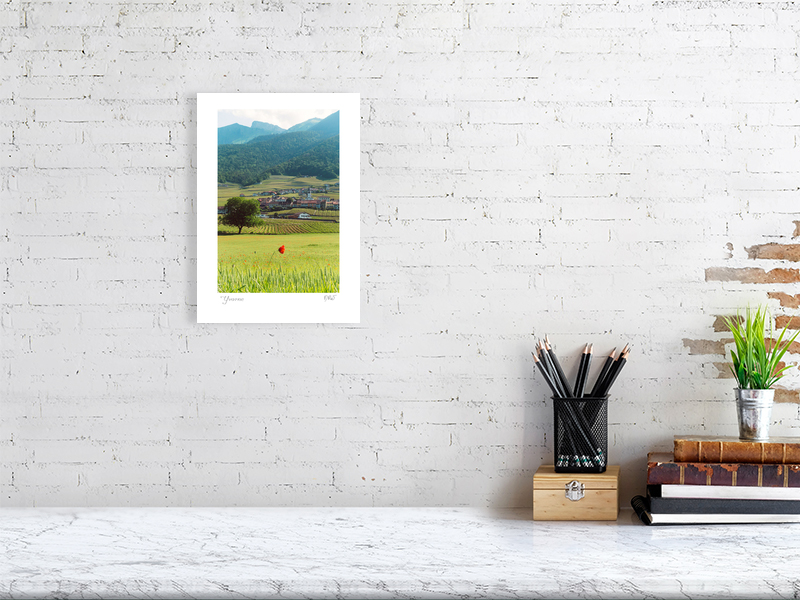
Yvorne, Switzerland – Red Poppy Fine Art Swiss Alps Photography Print
Size: 21cm x 30cm, 8.3inches x 11.7inches, Frame: Print only
CHF 40.00This was taken with a 50mm manual focus lens on a digital crop sensor body, so closer to 75mm on a 35mm. Of course, on medium format, the lens you would actually need would be around a 110mm, based on this forum post (https://www.photo.net/forums/topic/330951-6×7-equivalent-focal-lengths-in-35mm/). So with the standard Ikoflex II lens, flowers would be very much smaller at the same distance. The reason I’m saying this is that although I love my TLR, I do need another camera to be providing other focal lengths.
Then of course there are times when you need to go wider. But as long as you are not trying to replicate a shot taken on another camera, ie. your camera phone on a square setting, then you should be able to get some pretty nice shots. Below I show a comparison between a camera phone pic, and my “replication” on medium format. The medium format shot needed to be cropped heavily.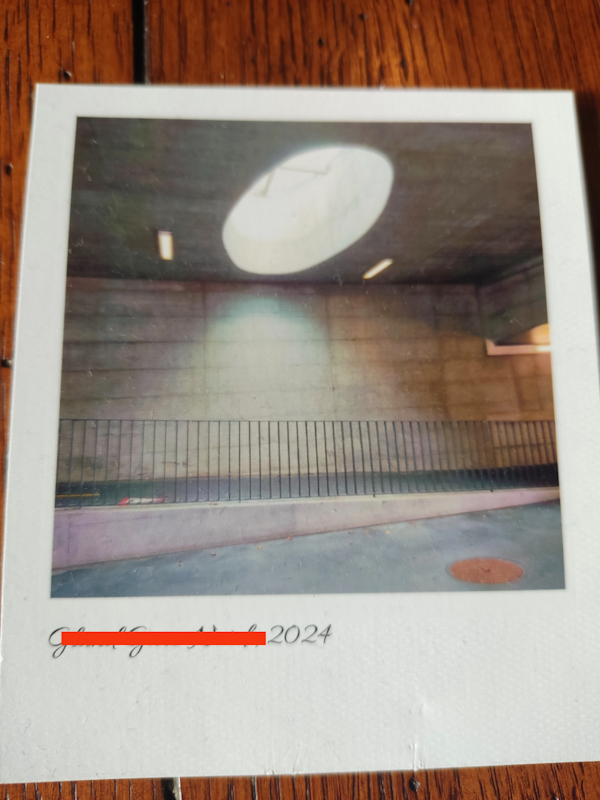
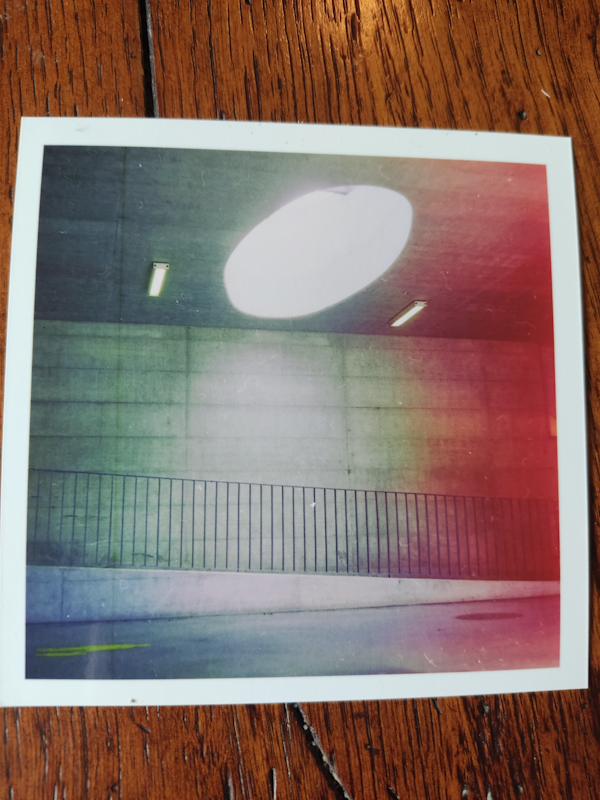
Here’s another comparison. This time I changed the scene composition slightly from the phone shot to the medium format. I also had to step back a lot further.
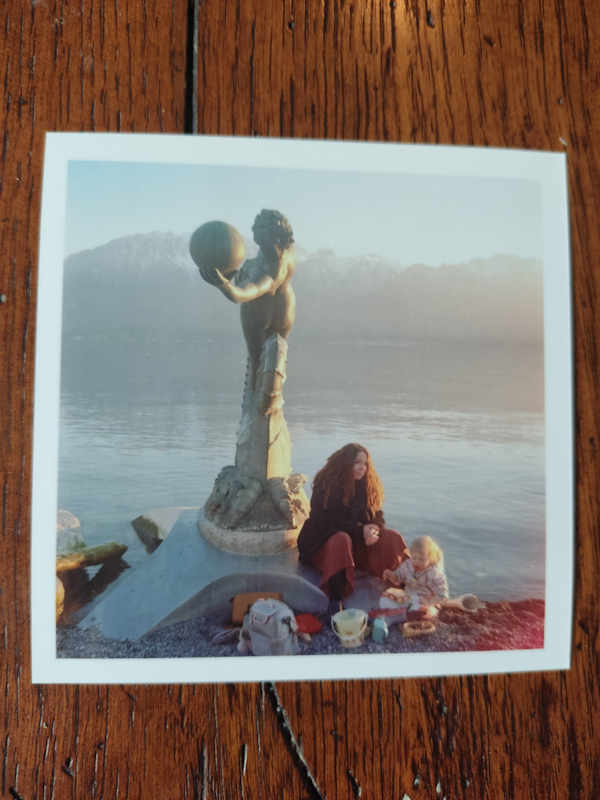
For portraits, this camera is quite difficult. I think its main issue is the focusing lever. Although the focusing lever is art deco gorgeous, I would probably get the dial given another opportunity. It’s just very difficult to make micro movements. Plus, it continually comes loose, meaning I have to re-tighten with my fingernail.For detail, medium format is a big step up from 35mm. I couldn’t believe when I got the shot below scanned. It was popping out at me. The detail on the roof was just jaw dropping.
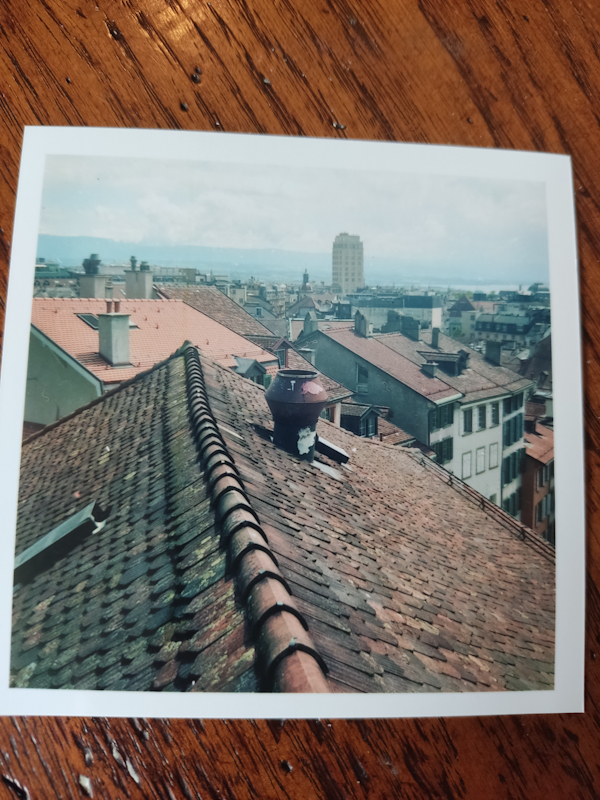
Then there is the film you pick. With Portra 800, you get a lot of wiggle room. But you can also overexpose to get somewhat of a pastel look, which I think I have a bit of in the image below. (These are all just small, regular, glossy prints from Cewe, with no ICC profiles used. I expect them to look a lot better when I get ICC enabled prints made from The Print Space).

Of course, with these old cameras, there is often at least a small issue. On this particular camera, it is red light leaks, as you can see from the images below. It seems to arrive when the light is particularly strong. I could alter this, but in fact, I quite like the added effect sometimes.
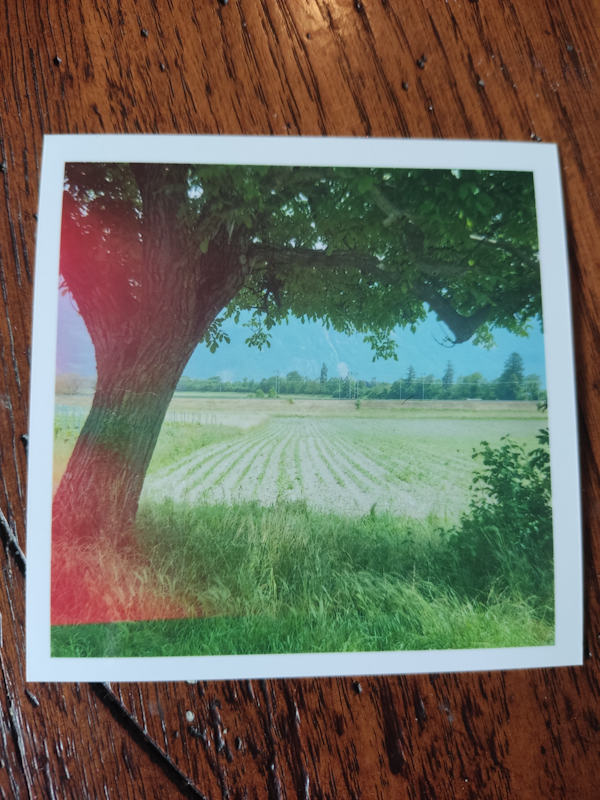

So that is a brief run through some examples images on my Ikoflex II. Some of the above will definitely be making it to larger print, although I may try to get them rescanned on a Noritsu 1800 available at Quick Photo in Geneva, as opposed to scanning on my Epson v700.
I’ll leave you with a couple of further shots:
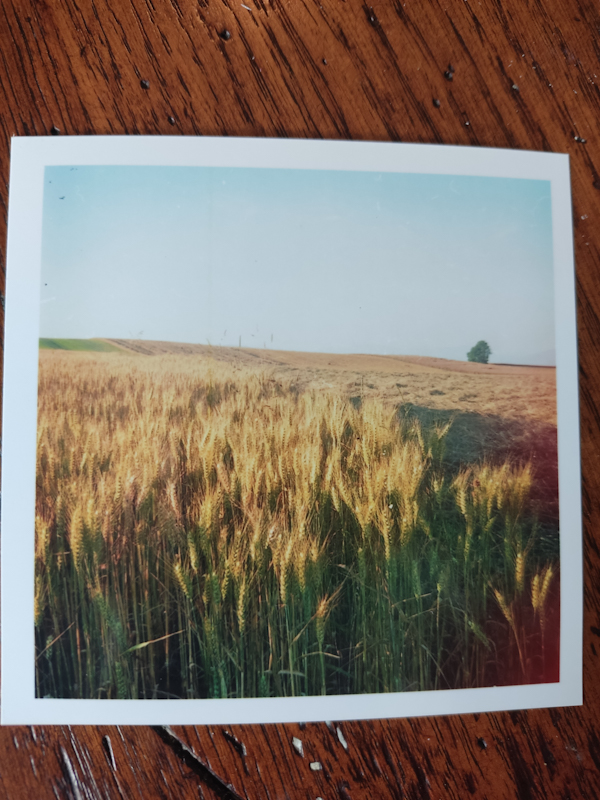
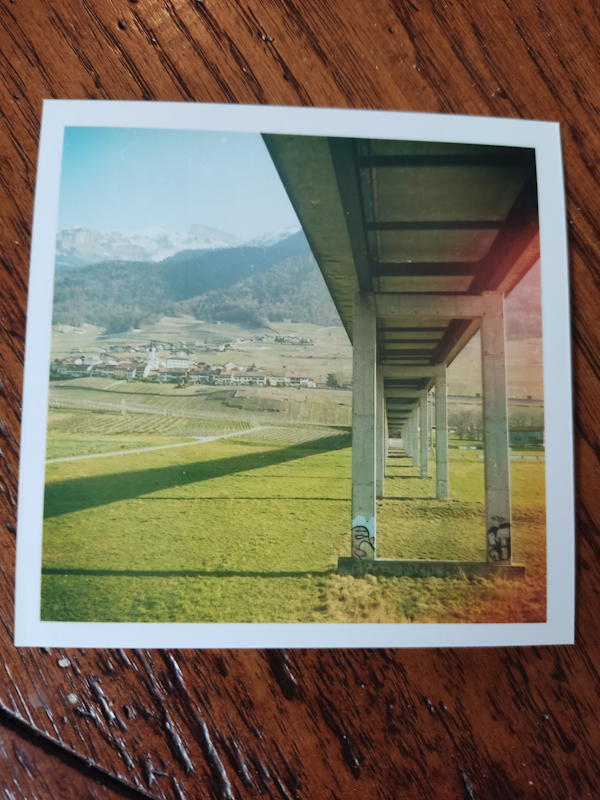

Olympus AZ-210 Super Zoom – Review and Example Images
It is with great pain that I must leave behind my Vitomatic II, and move back to my Olympus AZ-210 Super Zoom.
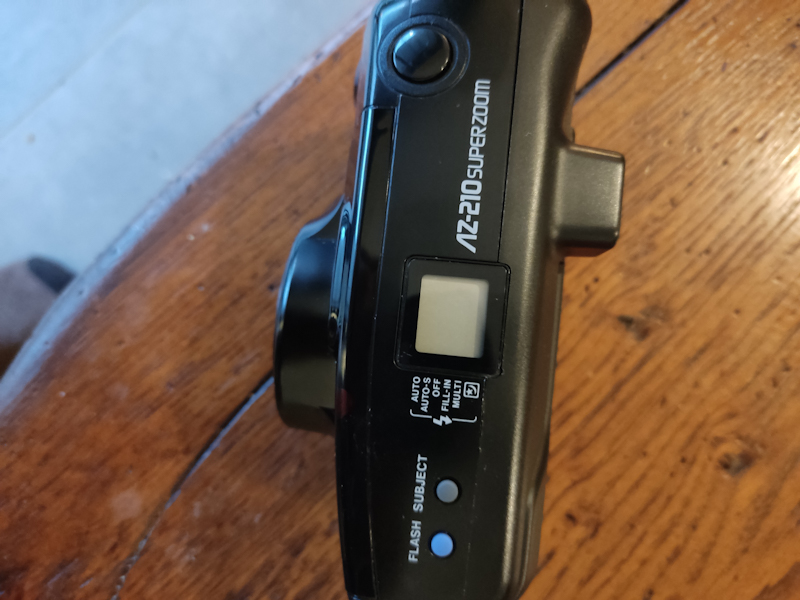
Despite loving the look and feel of my Vitomatic II, I lost some very important pictures (to me) on that roll. It looks like a shutter issue according to the Reddit analogue community.
So I’m back to my Olympus AZ-210 Super Zoom. I had been using it as a travel camera, there to take the Christmas shots and the like of family. Also, it makes a great wedding camera.

What stands out on the Olympus, as well as I imagine most point and shoots, is it’s versatility. It can be out during the day, with the flash it can be out during the night, it auto-meters dependant on the film, it has a zoom function(38-76), it has a timer, autofocus, and finally, it is theft-proof-UGLY.
Yes, you read that right. The Olympus AZ-210 Super Zoom has the classic 90’s Super Ugly look. Encased in plastic, and shaped like it was handcrafted by THE most boring person on planet Earth, we have here a theft proof gem, particularly if you can pick one up fully working for 20 pound like me.
I have to admit, I’m not much of a technical photographer. I can work a manual film camera, I’ve been through the digital age, but extra functions beyond the timer tend to get ignored by me. So it’s possible this camera has other functions. I wouldn’t know. What I do know is this is a great carry round camera, light enough not to disturb the normal workings of your shoulder, certainly getting within the realms of being a spare carry round.
When I get over the fact that the camera can crack mirrors if it looks at them hard enough, what we have is something highly useable. How often are you in a scene where you can’t take a picture because the light is too low? How often are you scared of your camera being stolen? How often do you leave your camera at home because of weight and size restrictions? As a take-everywhere camera, this is quite perfect.
And so onto the images themselves. I must say that I find them pleasing. They’re not as sharp as you might get with a prime lens, the colours are perhaps ordinary, but you are still getting the film look, which to my mind elevates it over anything digital. There is even a night shot here, in low lit conditions, which I think has come out quite well.
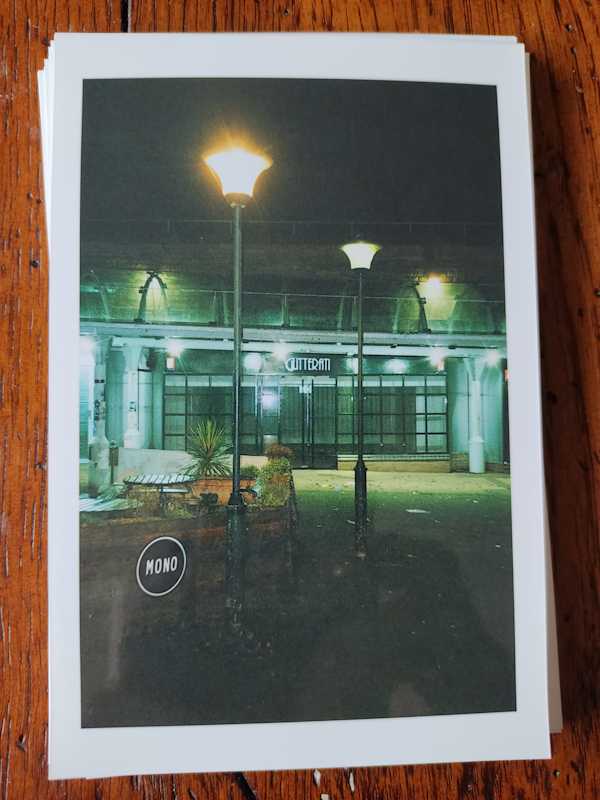
In terms of being robust, well I must confess, I dropped the camera on the floor very early on, and it has continued to work very well, this despite the fact that when I dropped it it split open. Now, don’t go verifying my results – it is still made of plastic, but I thought this was something positive to add. However, at least buy a wrist strap for it, as it’s design is bulky in a way, and not the easiest to get a grip on when you are removing it from the case.
So, finally, I’ll finish with some images so that you can make your own decision.
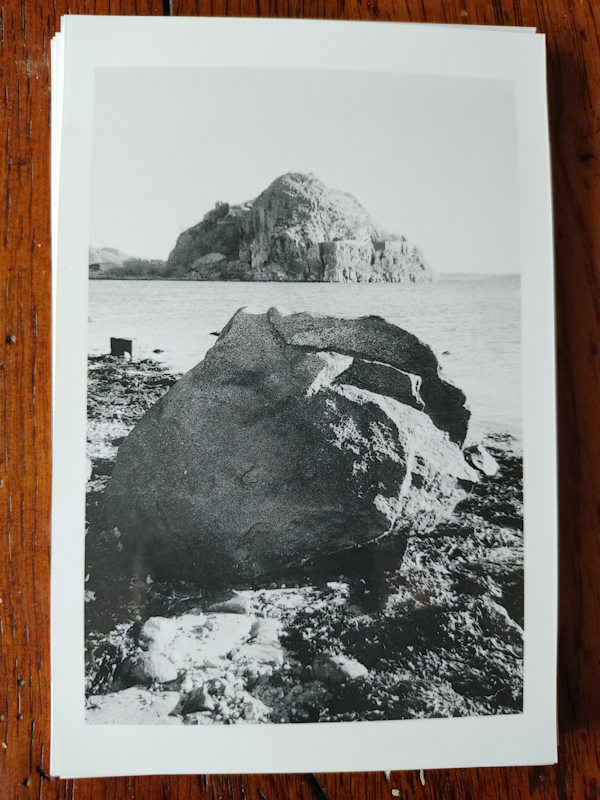
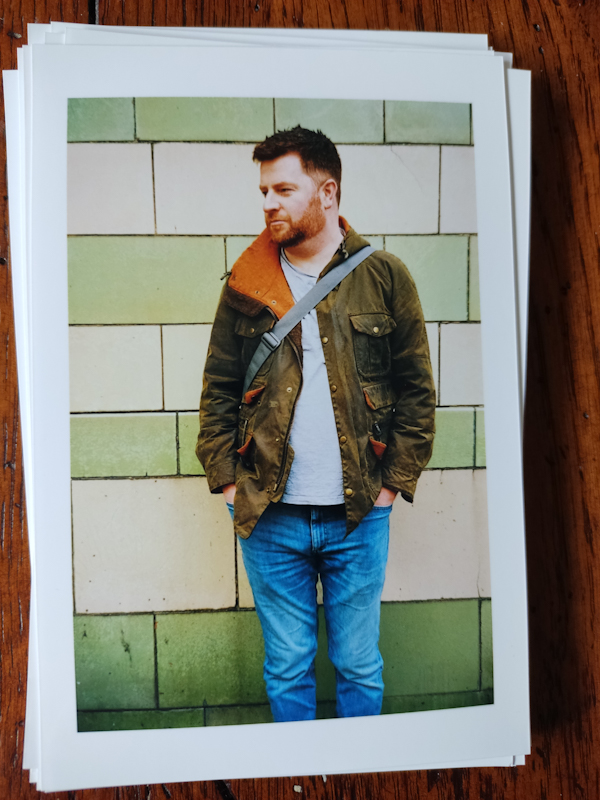
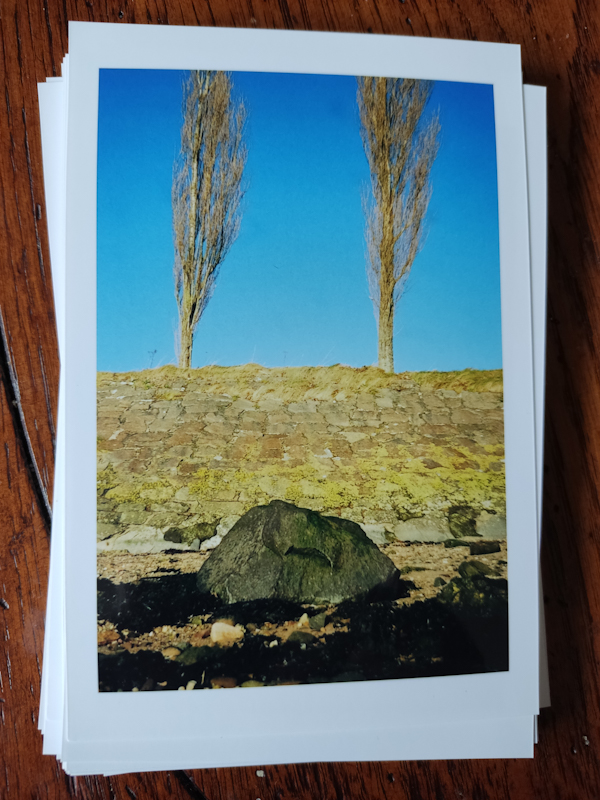
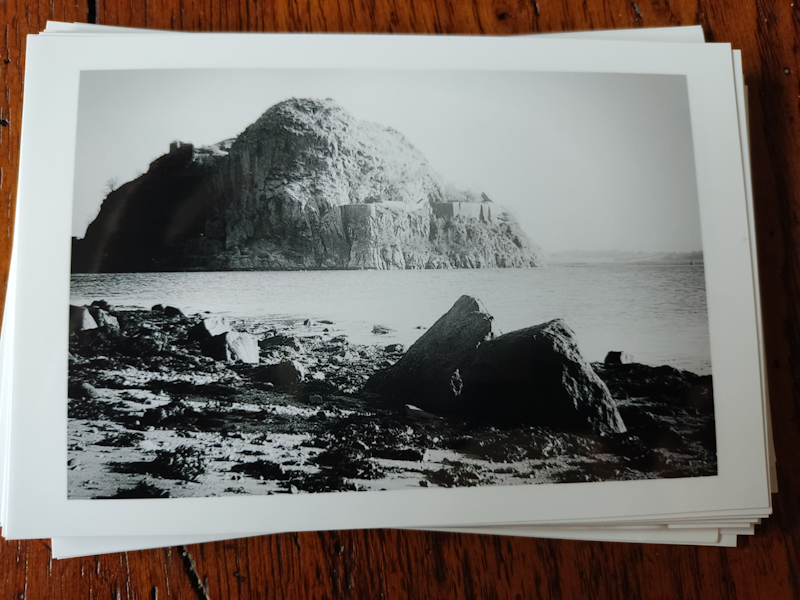
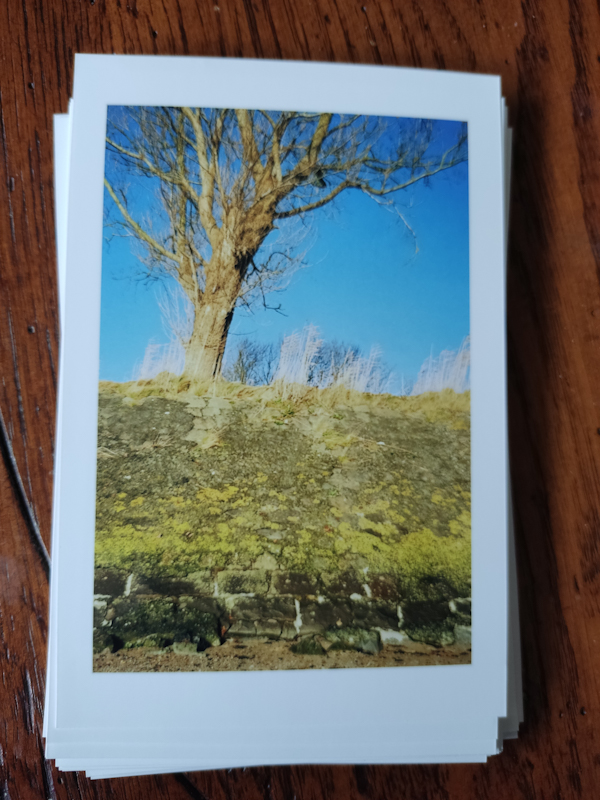
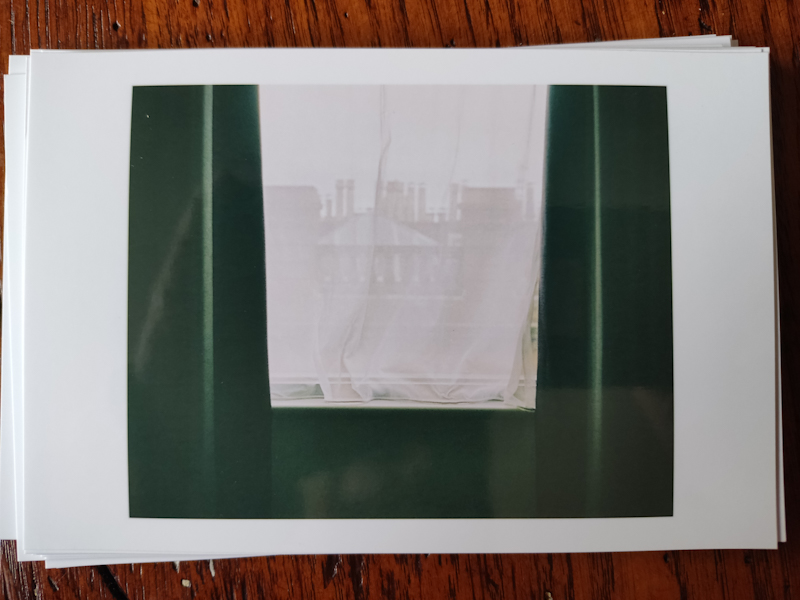
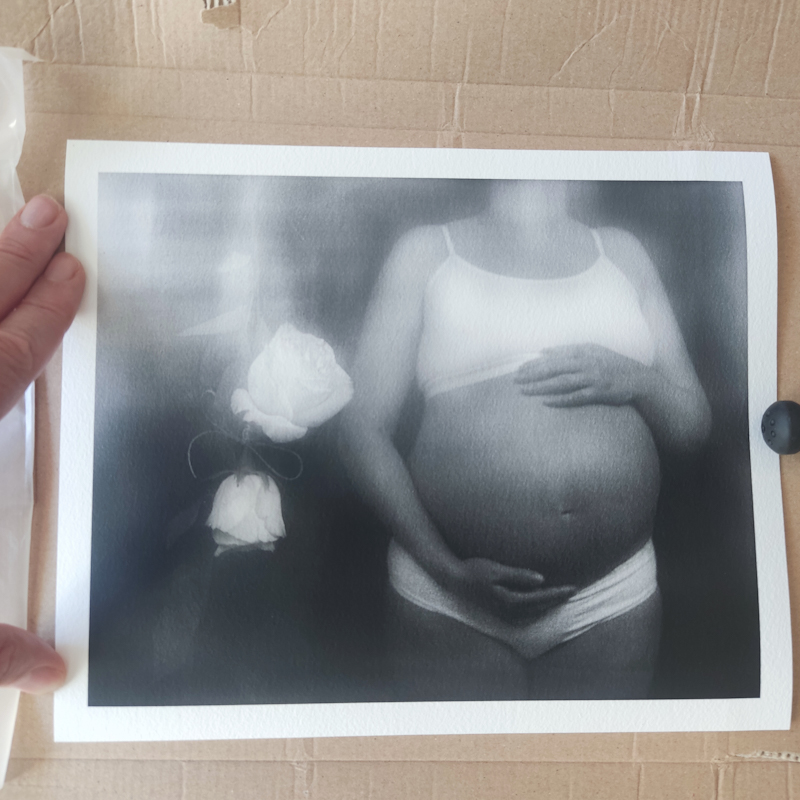
Entwined – pregnancy photo
The “Entwined” print by Almos Lataan (https://almoslataan.com) arrived back from Printolino. It is 10×8 inch print, from a 5×4 Large Format Negative. It’s actually a recent edit. There was a print version of the photo used in an exhibition at The Glasgow Gallery of Photography which was was still a little dark, so some edits for print were made.
Printolino are great for the quality of the print. However, I used to use Loxley Colour, who also produce fantastic prints, and I would say that their packaging of the prints is a little better, with two extra stiff pieces of card on either side of the print, minimising the chances of damage in the post.
As to paper choice, Hahnemühle William Turner 308gsm was chosen.
The AlmosLataan project itself is meant to be a celebration of life.
Two souls are entwined in pregnancy, beginning a relationship of love, beauty, and pain, symbolised by the roses.
Initially part of a sister project (at https://almoslataan.com), I am showing on this site as I’m not really updating my other site at the moment, but I may do at a later point. I would define this particular piece as representative of a more serious approach to photography which I would like to explore, along the lines of celebrating life, in an age where life itself is being rejected in a very real sense. I hope that this photo helps capture the beauty of what is the incredible birth of a new person into this world, with all the wonder that accompanies welcoming them, and seeing them grow.
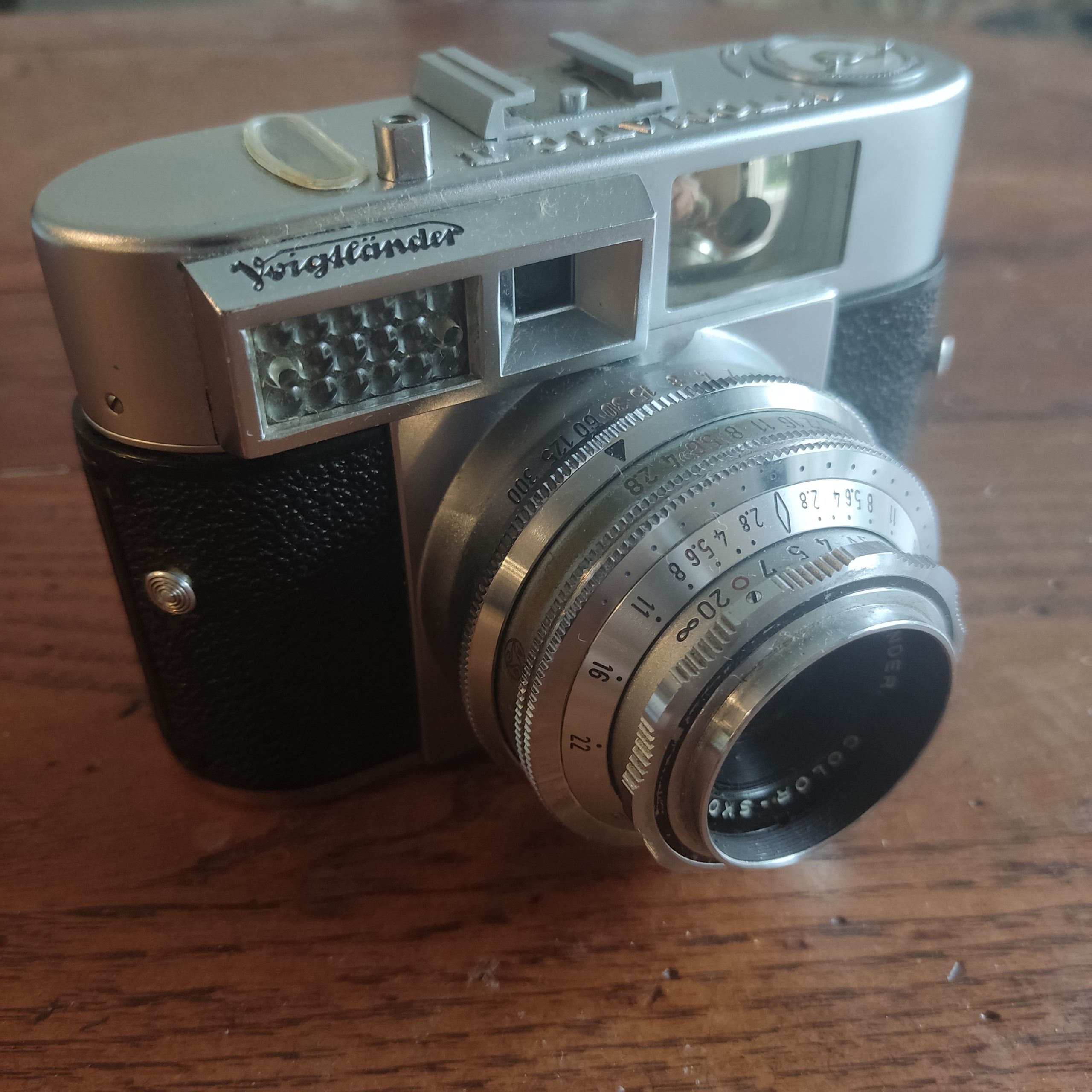
Voigtländer Vitomatic II
The quest for a quick to use, compact, quality film camera (on the cheap) has led me to the Voigtländer Vitomatic II, complete with the Colour Skopar 50/2.8.
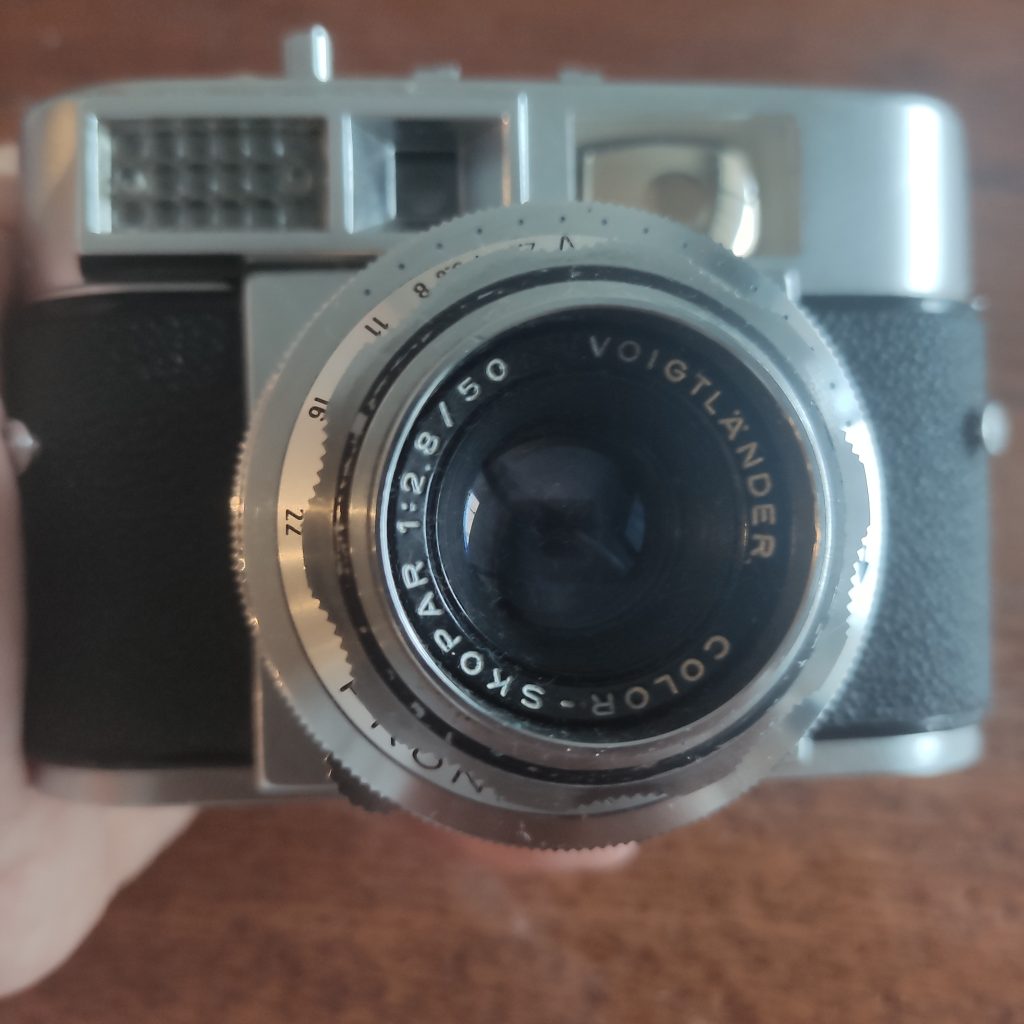
The first point I would like to reference is the build quality. This camera is heavy, and has a wonderful heft to it. It seems to be completely made of metal, not something you see often these days. I also bought a Voigtländer Vito CLR at the same time (a present for a friend), but this arrived with a broken range finder, stiff focus, and a loose, and useless light meter. Perhaps this indicates that the CLRs are lower in quality, but it is only an example of one. The naughty Ricardo seller did not inform me of the broken viewfinder, even though it should have been obvious! Still, I bought two untested cameras on the cheap, and one turned out to be fine, so that’s not bad, although I’ll probably need to buy a different present for my friend!
So, back to the Vitomatic, and now it’s usability. Loading the film is reasonably simple. You need to lift and turn a latch on the bottom of the camera, which releases the whole back. Then it’s a case of sliding the film into a slit on the left barrel, then pulling the spool to the right to hook into the space provided. The slit barrel should have been pulled to the left, making the film tight, and with the film perforations sitting on the teeth. At this point it is safe to close.
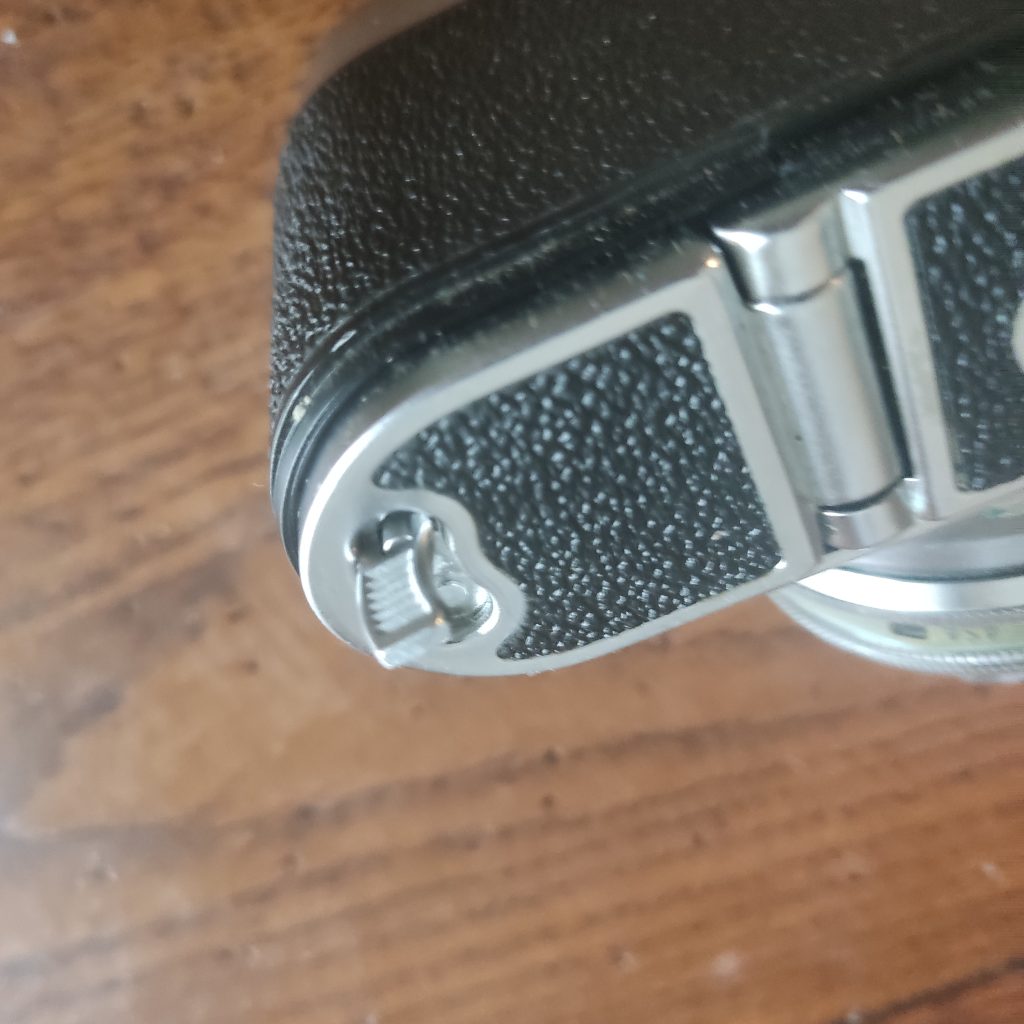
Following this, you must set the film counter to F (for a spool of 36).

Then ensure your ASA is set to the right number (I had Kodak Golf 200, so I set to 200). To do this, you need to press down the semi-circled, toothed cog, and turn the ring until 200 comes into the ASA window.
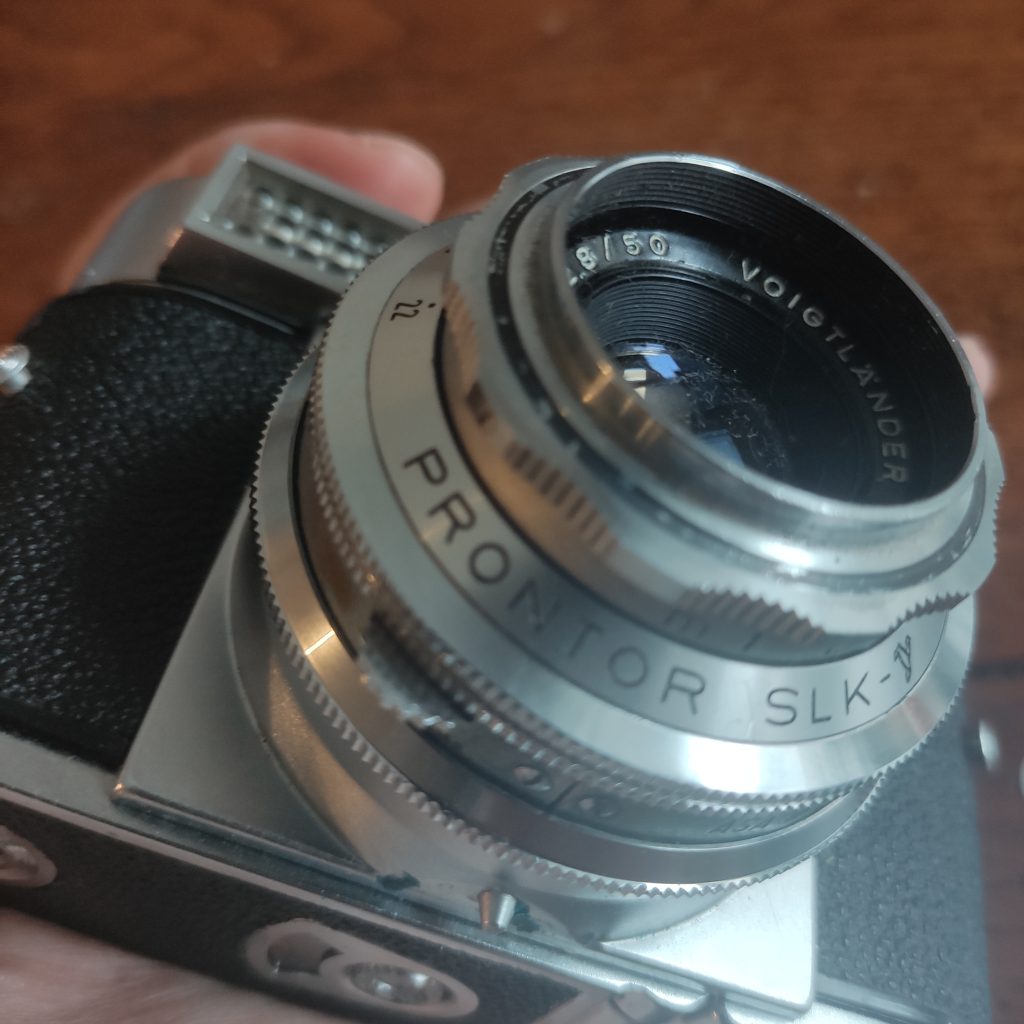
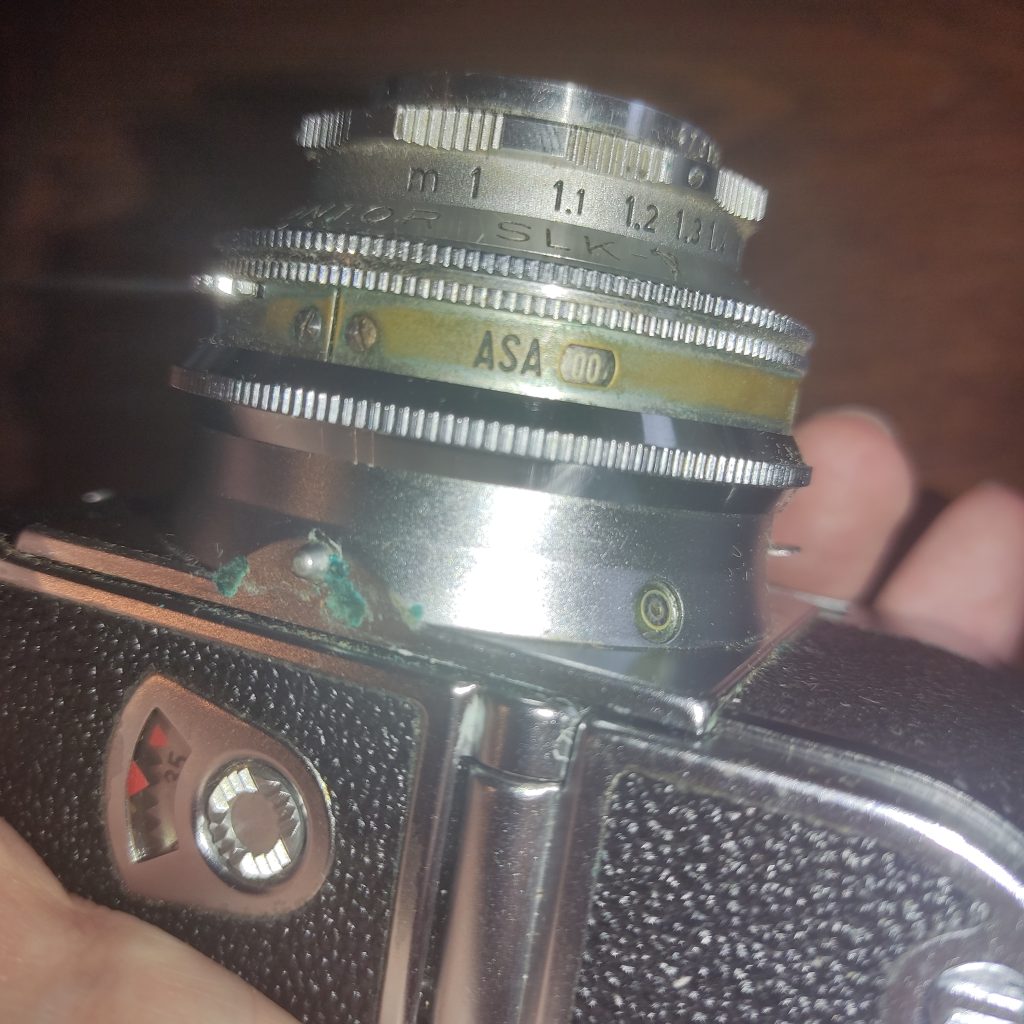
After this, you just need to cock the shutter. This requires pulling back the clip on the back of the camera once or twice until it locks. Simple – now you are ready to shoot.
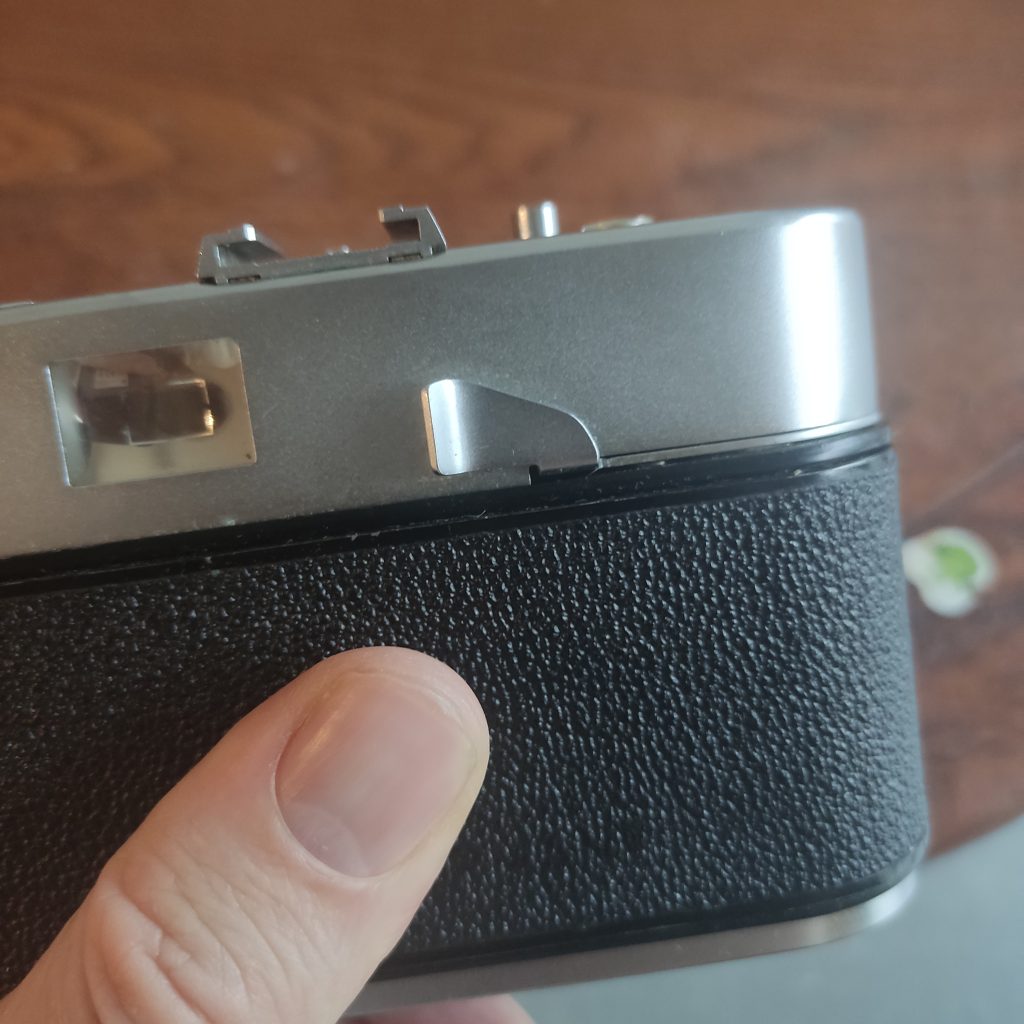
The next step is not so simple, but I hope that it will get easier with practice. This is the focussing step. The camera is a rangfinder, so this means there is a split image which you need to bring into alignment. When I first picked up the camera, I thought it didn’t work. I was peering through the viewfinder, and turning the front focus ring with no effect. Finally, I consulted the online manual, and saw that there should be a central yellow patch that I had to point at a vertical line when holding the camera horizontal, and point at a horizontal line if holding the camera vertically. I was finally able to see a dim ghost image when pointing the yellow dot at vertical lines. Rotating the focus, I could bring this ghost image into alignment with the object I was concentrating on. Voila! The focussing worked! What I would say is that it is hard sometimes to see the ghost image, particularly when it is within the object, such as a face. I think what I will do in future is try to guess the focus distance first, then alter the focus ring manually, then peer through the range finder, concentrate on the right vertical of an object, before turning to the right. This should reveal the ghost image, and I can then turn to the left again, sure if focus.
Of course, you still need to get the right combination of shutter speed and aperture. The camera has a clever way to do this.
First, you must align the light meter eye (a circle) over the light meter needle, so that the needle appears within the circle. You do this by rotating a ring on the lens. Easy peasy.
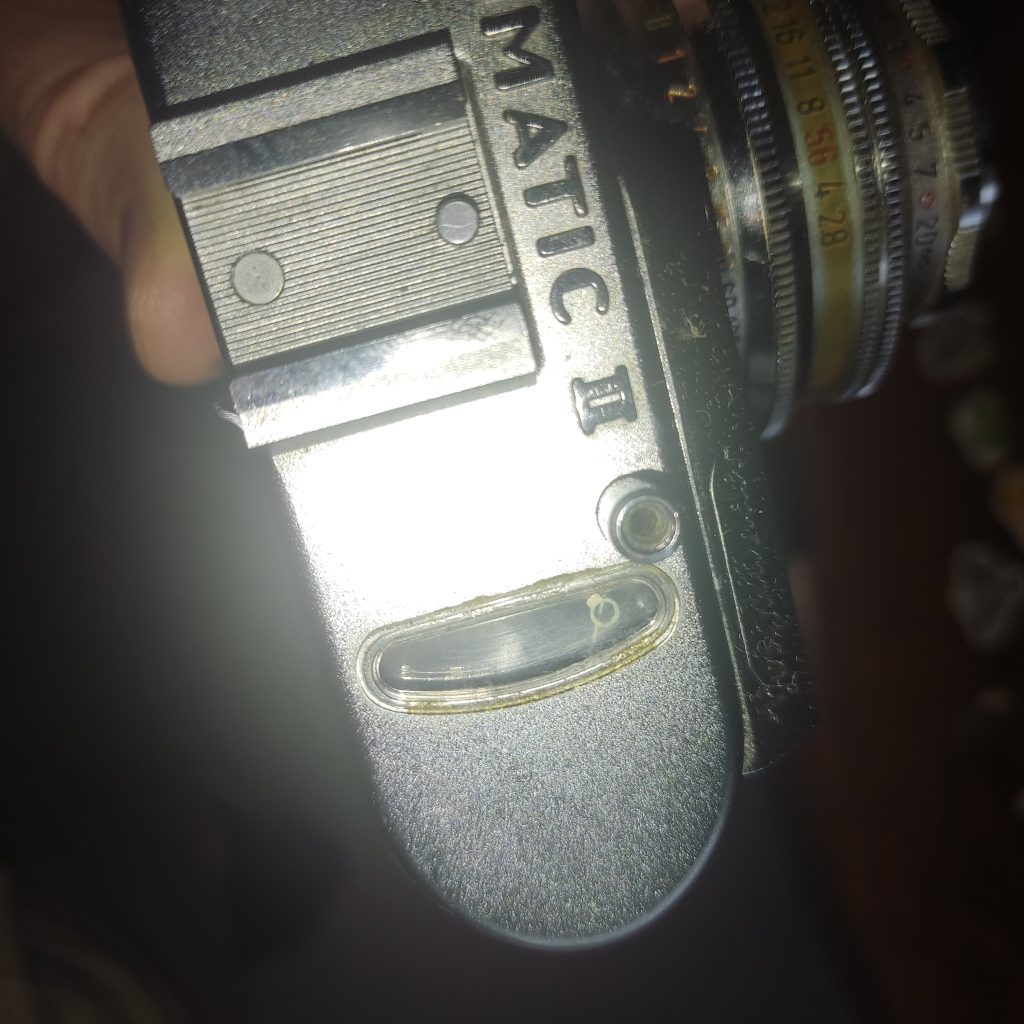
Second, you then select your aperture, shutter speed combo. By rotating the aperture ring on the previous step to align the light meter, you will now have a number of shutter speed aperture combos available to rotate onto by turning the shutter speed dial on the lens. It’s a clever system.
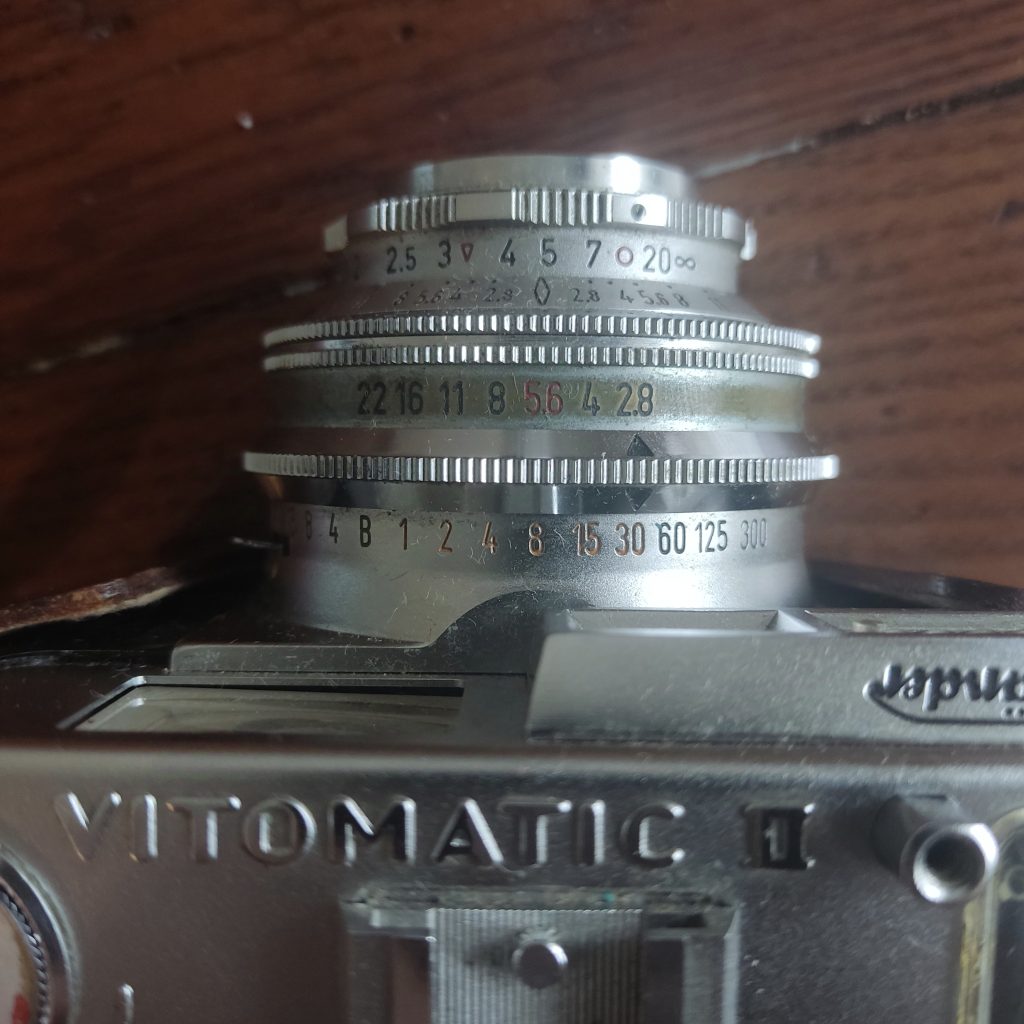
Then it’s a case of pressing down the shutter button. The click isn’t very satisfying, it’s quiet and barely registers. However, this is good for candid photography.
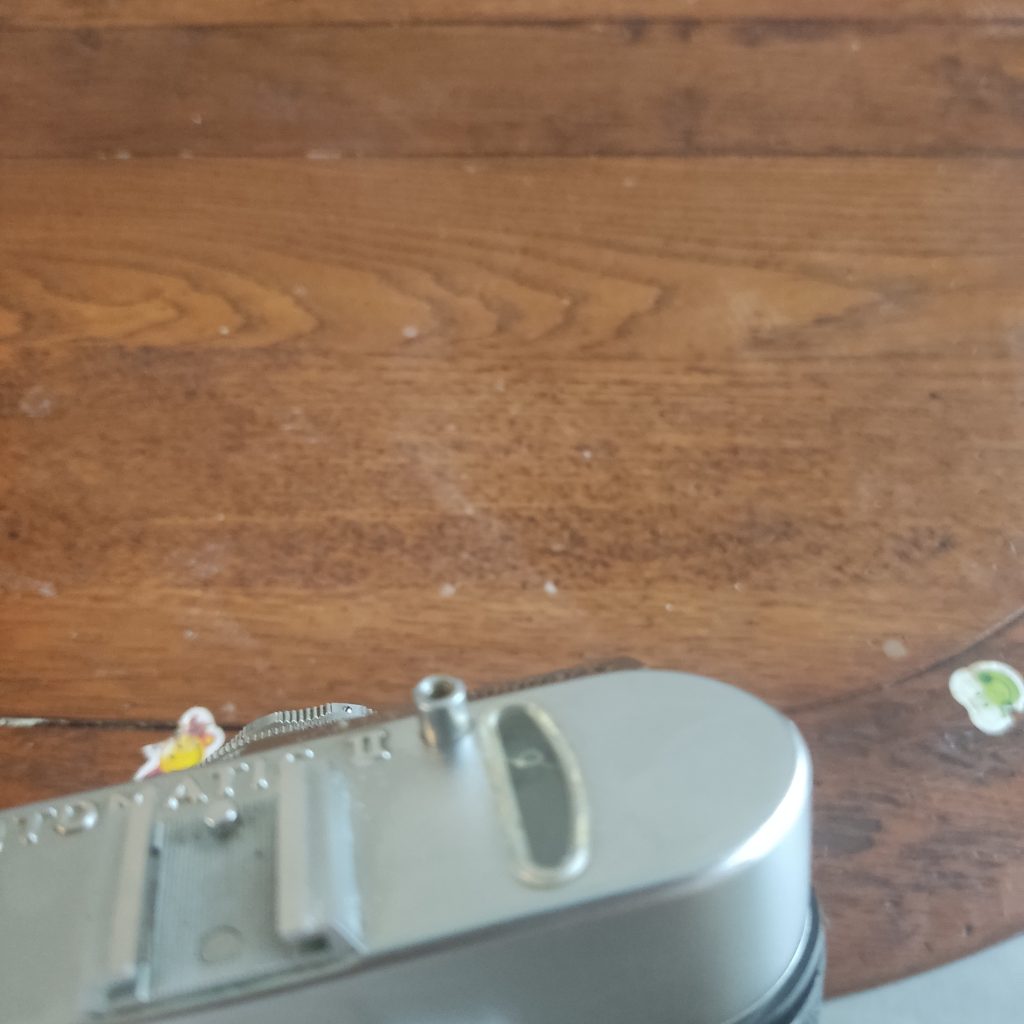
So that’s all the functions. Everything seems to be working on my camera, but I still need to put a whole roll through it. There are still a few things that could go wrong: an inaccurate light meter; slow shutter speed. But I hope that I get some good pictures back.
I will update with the results as soon as I can print some pictures. I don’t just post photos on the internet anymore, it needs to be in print form. This protects the image from algorithm and normal theft, and also encourages me to actually print the photos! Physical media trumps the virtual – it’s so much nicer to flick through an album than look at your Instagram, plus it helps to prevent ego bloat.

The New Real of the Unreal
As you may have gathered from previous posts, I am in the process of semi-rejecting The New Real of the Unreal. Artificial intelligence has arrived, and if we are not careful, then we stand to lose much, perhaps even our sanity.
For what is sanity apart from a firm connection to what is real? What is “real”, but surely that which is firmly believed to be the truth, firmly believed, that is, across the shared collective.
Of course, we can argue that our relationship with “truth” has always been fairly circumspect. Since the printing press, our “shared reality” has been a pushed reality that reflects the thoughts and observations (potentially) of a relatively small proportion of the population. Without adequate safeguards in place, if they are indeed possible, the idea of “truth” can be warped.
Which is why locality is so important. Can we really experience, or believe, truth without verification? If something is local, eg. a newspaper, then we can verify the stories with the environment to an extent. We can talk to people, we can visit localities.
And so what we find is that truth itself doesn’t travel long distances well. In fact, we are taught this from a young age through the game (rather inappropriately named) “Chinese Whispers”. Of course, not many consider the massive implications of this game, what this itself means about reality. And this is just in the physical realm. What are the implications for the digital realm?
Concentrating a little more on the physical, we could be ignorant individuals, and focus our efforts entirely within a very local sphere, but the issue with this is that we live within an interconnected world, where events in far off places can affect our little localities. We need trade, we need security, we need to look after those who are less fortunate. With this in mind, there needs to be a trust handover to those who are in control. To those who control the information.But can we indeed trust those in control of the information? For that, we need to analyse what is valuable to those in control. This is perhaps too broad a topic to consider in this post. We could say that each individual is valued for the unique person that they are, existing in a potentially infinite universe. Could say… Or we could be a little more pessimistic, and say that each individual is really a measure of economic potential. And this is where, in our current climate, things can start to get a little tricky. Because with AI, that economic potential is starting to look like it is a lot less than it was maybe 10 years ago.
But where does this all fit in with reality? This is the area I would like to explore a little more of over the next series of posts. I’ll start by saying that the digital world seems to be morphing into a product of imagination, rather than a reflection of the real, physical world. This is a problem, because people seem to have the idea that it is the latter, taking at face value what they read and see on the internet. With the advent of AI, there will soon be literally no way to discern fact from fiction online. The technological pace is frightening. The ability to manufacture “reality” is so profound, that we must also ask ourselves some very serious questions, such as, how long has this technology really been in existence?; how much of the internet has always been fabricated?; could a technological hegemony appear, or have already been in existence for a very long time?. We can see that there are multiple avenues for “reality” and our sanities to become frayed.
As an artist (although just a photographer), I am keen to begin to explore modern reality. What I like about photography, particularly film, is that at least I can be reasonably certain (bar some metaphysical internal discussions on whether matter really exists) that I have a snapshot of what is real, through the negative. But how, as an artist, can I begin to share this reality with others? How can we prove reality? Because I think that the future is going to bring with it a need for physicality. People are going to need to hold onto a physical item in their house whilst repeating, “This is real. This is real…”. How are we going to help people stay grounded, and encourage them to embrace physicality?